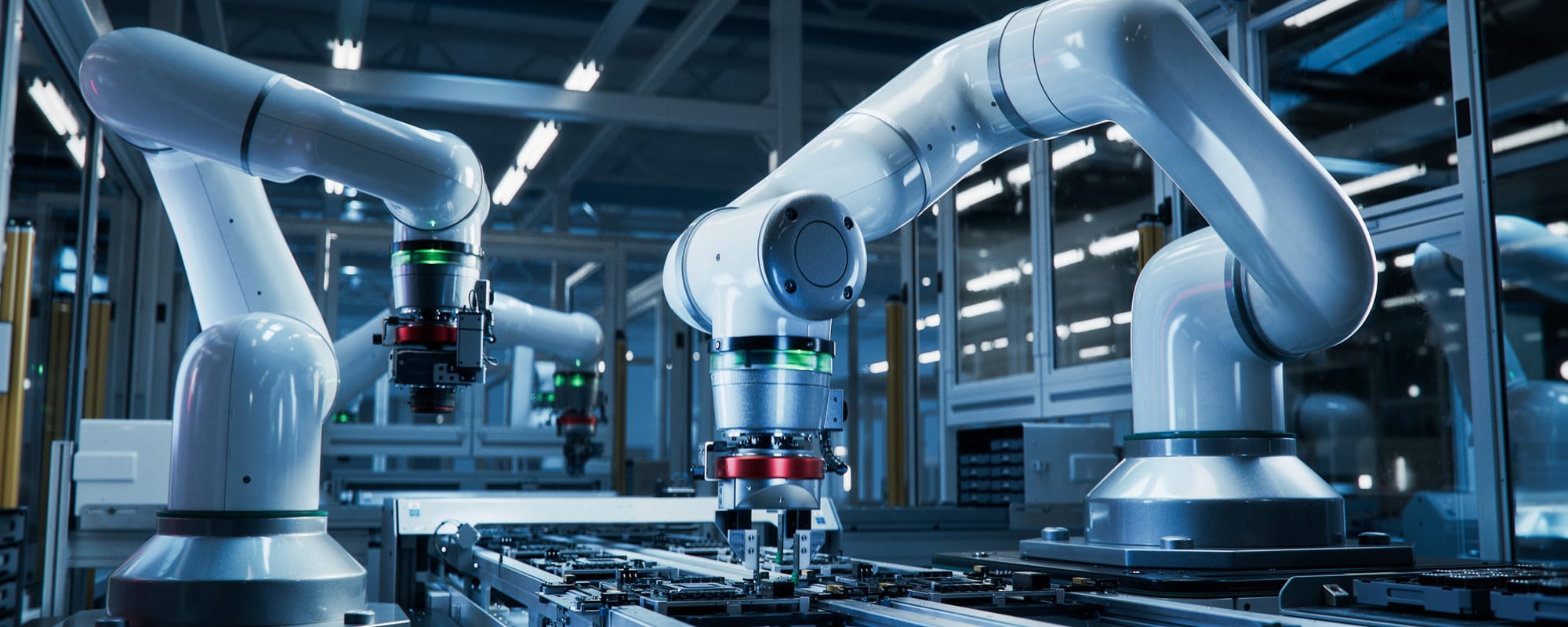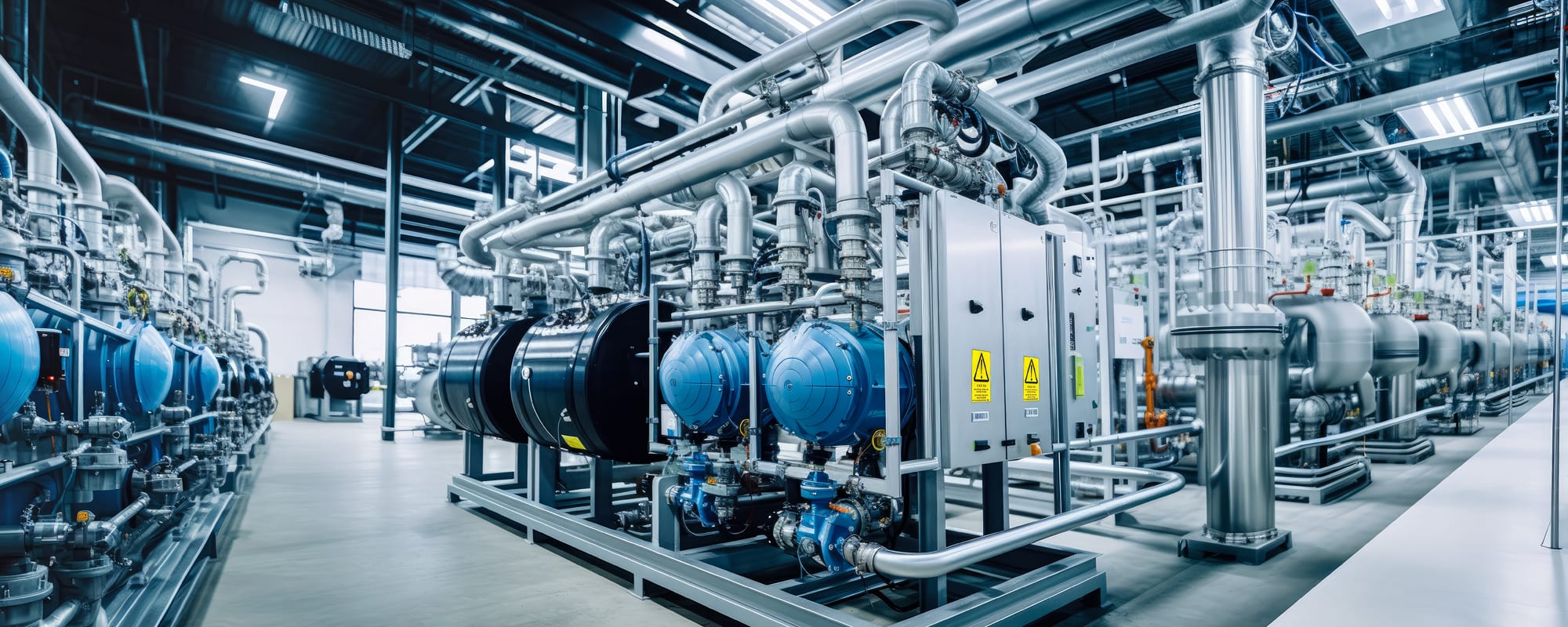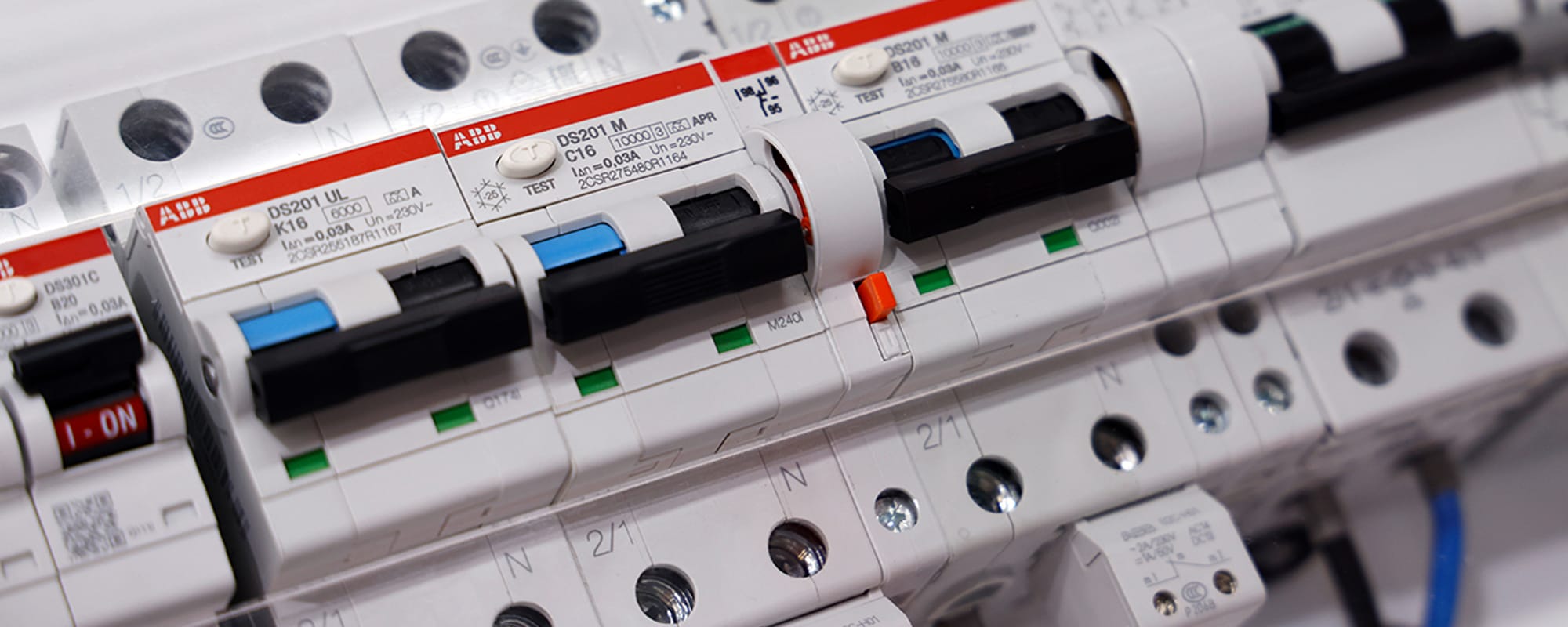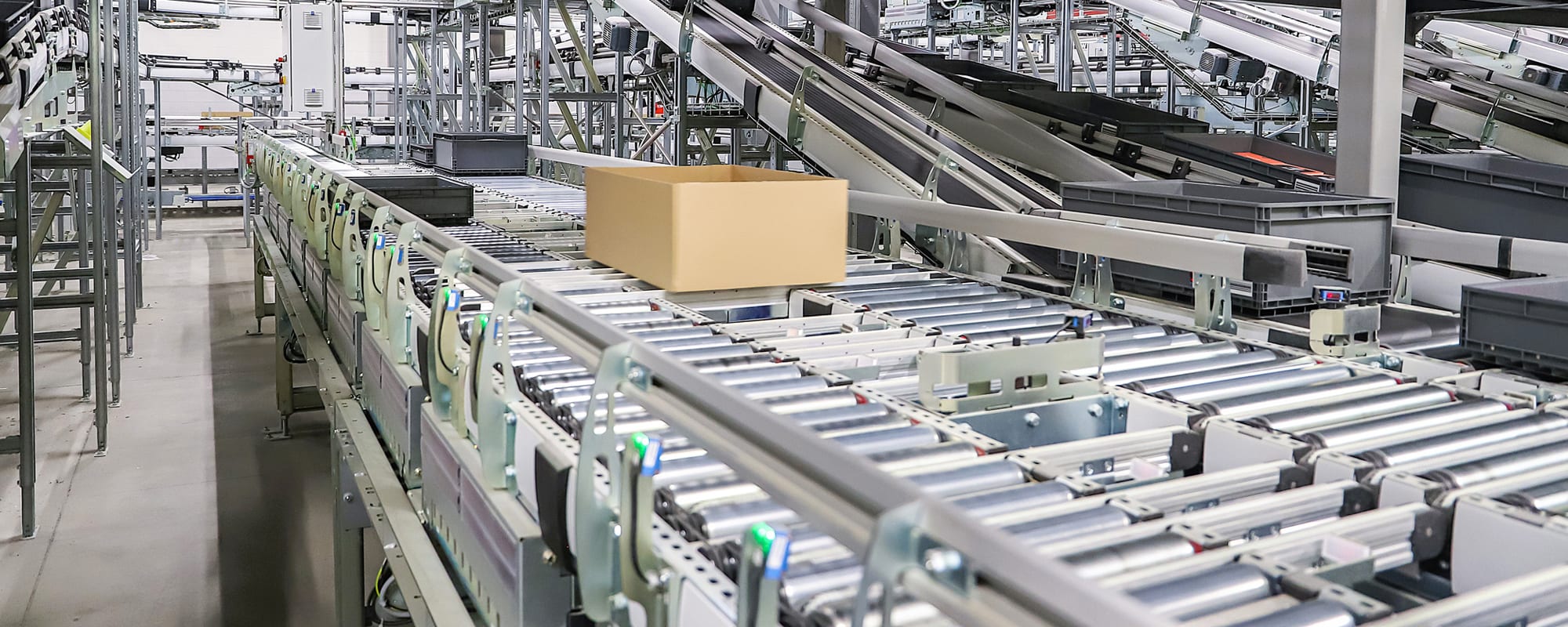Machine safety controllers are critical facets of industrial automation equipment — especially as automation becomes more prevalent — and choosing the right one is essential for ensuring safe and efficient operations. We spoke to Matt Mohr, Safety Product Manager at Omron Automation, to learn more about safety controller functions, applications, selection criteria, and Omron’s NX Series Safety Controllers.
The steadily increasing adoption of industrial automation systems is amping up the need for advanced machine safety solutions. According to a December 2023 report by Statista, the global industrial automation market was worth $311.19 billion in 2023 and will grow by an astronomical $29.79 billion from 2024 to 2025, achieving projected value of $368.37 billion. Machine safety solutions, like safety controllers, provide critical protection for both valuable automation assets and the people that work in their vicinity. To learn more about machine safety controllers, we spoke with Matt Mohr, the product manager for safety technology at Omron Automation, who delved into the impact of machine safety solutions on the industrial sector, the latest machine safety trends, and the growing demand for intelligent and scalable safety controllers. Matt also shared how modern safety controllers simplify integration, reduce setup time, and offer flexibility key to satisfying the operational requirements of various industries and introduced Omron’s NX Series safety controllers.

Q1. Hi Matt. Please introduce yourself and tell us about your role at Omron.
Hello. My name is Matt Mohr, and I’m the Product Manager for Omron Automation’s safety technology. I’ve been in this role for almost four years and have managed both panel components and safety technology during my tenure. I attended school at Iowa State University, where I studied computer engineering. After college, I spent seven years in electronics manufacturing followed by a few years at a company that supported data center infrastructure before moving into industrial automation, which ultimately brought me to Omron. As the Product Manager for Omron’s safety technologies, I’m responsible for marketing our safety products and supporting the sales channel by creating and executing our go-to-market strategy for the Americas region.
Q2. Please also provide us with a brief introduction to Omron.
Omron is a leading global automation company headquartered in Japan with offices in almost 40 countries. We specialize in designing and manufacturing a vast range of automation technologies and electronic products for applications in various industries, including industrial manufacturing, healthcare, and social systems. Omron Automation is an industrial automation partner that creates, sells, and services fully integrated automation solutions, including sensor, control, safety, vision, motion, and robotic products.
Q3. You joined us today to talk about industrial machine safety technology and specifically safety logic devices, also known as safety controllers. What are they and what do they do?
Safety controllers are specialized devices used to monitor and control safety-related functions in industrial automation systems. They’re critical for protecting both workers and equipment, and they help enforce safety protocols while automating responses to hazardous conditions, preventing harmful accidents, and reducing downtime.
The primary components of safety systems include input devices, logic processing devices, and output devices. Safety controllers are logic processing devices that can execute safety logic to evaluate conditions with inputs and make decisions based on those inputs.
There are some similarities between safety controllers, safety relays, and standard programmable logic controllers (PLCs), but safety controllers are the only option specifically engineered for complex safety functions. The main difference between safety controllers and safety relays is that the former can perform complex logic, while the latter is limited to basic logic operations.
PLCs, on the other hand, are general-purpose logic controllers widely used throughout the automation industry, and while they can be safety-rated, they aren’t always. Safety controllers are designed with fail-safe features to meet stringent safety standards that standard PLCs normally don’t meet. As such, they enable more comprehensive and centralized safety management systems than safety relays and standard PLCs, making them vital in high-risk manufacturing environments where safety is the highest priority.
Q4. Tell us more about the role that safety controllers play in industrial safety systems and the markets and applications they’re widely used in.
Safety controllers are essential for monitoring and controlling safety-related functions that protect workers and critical equipment. They interact with other elements of industrial safety systems — like sensors, emergency stops, and light curtains — to detect hazards and trigger automated responses, such as stopping machines or slowing them down. They also interface with machine controllers (PLCs) to ensure safety is a top priority during operations and provide diagnostic data through non-safety components like human-machine interfaces (HMIs).
Safety controllers help mitigate risks, maintain regulatory compliance, and optimize operational safety across a variety of industrial applications. Safety controllers are especially applicable in automotive manufacturing, food and beverage production, pharmaceuticals, heavy machinery, and logistics industries. In automotive manufacturing, they safeguard operations of robotic arms and conveyors. In food and beverage, they safeguard high-speed packaging lines. In the pharmaceutical industry, they ensure the safe handling of sensitive processes and materials. In heavy machinery, they prevent dangerous accidents with large, powerful equipment, and in logistics, they enable safety in complex automated material handling systems.
Q5. Obviously, machine safety solutions, like safety controllers, are designed to keep employees and equipment safe and companies in compliance. But I read that they can also help overcome a variety of other common challenges. Can you tell us more about those?
Machine safety solutions are rapidly evolving to address both regulatory compliance and broader operational challenges. As industries continue to embrace automation, they face increasing pressure to ensure worker safety, decrease downtime, and optimize operational efficiency. Trends like labor shortages, the need for scalable systems, and limited factory space are driving demand for more intelligent and adaptable safety solutions. Modern safety controllers are designed to meet these demands by simplifying installation, supporting scalability, and helping customers make the most of their available space while also ensuring the safety of employees and equipment.
Modern safety controllers simplify integration, installation, and commissioning time by offering features like pre-configured safety functions, modular designs, and streamlined wiring. These functions minimize complexity during setup, enabling faster, less laborious deployment. This is especially valuable in industries facing skilled labor shortages because it minimizes the need for specialized worker expertise and accelerates the commissioning process. Faster installation also minimizes downtime during system upgrades, keeping production running smoothly and improving overall efficiency.
Safety controllers also support versatile and effective operations, allowing users to adapt systems to their needs as they grow. Advanced controllers offer programmable logic and flexible configuration options, enabling users to modify or expand safety solutions without major overhauls. Scalability is also critical to consider when planning for future growth because it helps maximize operational investments with seamless upgrades and expansions. Integrating safety controllers with other automation systems can streamline processes, cutting manual intervention and improving overall productivity.
Many safety controllers are designed to make the most of limited panel space via compact designs that combine multiple safety functions into a single device. By minimizing the physical footprint of safety systems, users can implement more complex automation solutions without requiring additional room, allowing them to maximize their investment in infrastructure. Space-saving is especially advantageous for manufacturers looking to increase production capabilities without modifying existing infrastructure.
Q6. What types of things should customers consider when shopping for a safety controller to maximize their investment and ensure peak performance?
Customers should carefully evaluate several key characteristics when shopping for a safety controller to magnify their investment for peak performance. One important factor to keep in mind is standardized communication protocols, such as Ethernet/IP, CIP Safety, or Functional Safety over EtherCAT (FSoE). These protocols facilitate easy integration with existing automation systems and offer the flexibility to address evolving needs. Harnessing a controller that can seamlessly communicate across different platforms saves time during setup and allows users to expand their systems without costly upgrades or creating new infrastructure.
Another essential consideration is functional flexibility and application suitability. A versatile safety controller that can manage a variety of safety functions across different machines or production lines is highly valuable. This flexibility allows the same controller to be used in multiple applications, eliminating the need for multiple devices, cutting costs, and reducing maintenance requirements. For industries likely to experience changing production needs, investing in a safety controller with customizable functions is a smart choice that can future-proof safety systems.
Quick and easy installation and configuration capabilities help minimize labor costs and are another feature to look out for. Controllers with modular designs, pre-configured safety functions, and intuitive programming interfaces make setup fast and intuitive and minimize downtime.
Compact form factors are also important, particularly for application environments with limited space.
Lastly, robust monitoring and diagnostic capabilities are key to improving system reliability. Advanced controllers that offer real-time diagnostics and easy troubleshooting can detect issues before they result in failures, cutting downtime and ensuring smooth operations.
Q7. Please introduce us to Omron’s NX Series Safety Controllers.
Omron’s NX Series safety controllers are advanced safety solutions designed to seamlessly integrate with modern automation systems, offering unparalleled flexibility, scalability, and performance. Unlike other safety controllers, such as Omron’s G9SP Series, the NX Series supports integrated and standalone safety architectures, giving users greater control over the safety of their operations. This distinguished adaptability, combined with the NX Series’ ability to manage complex safety tasks, makes it a comprehensive option for industrial applications requiring the highest degree of safety performance.
The integrated safety architecture of the NX Series makes it easy to connect the safety controllers to Omron’s Sysmac automation platform, which facilitates machine control and safety functions communications over the same network. This integration reduces wiring complexity, streamlines operations, and allows users to manage both safety and standard control processes from a centralized platform. It’s ideal for large, complex systems where a unified approach to control and safety is essential for maintaining operational efficiency and consistency.
Alternatively, the NX Series can also operate in a standalone safety architecture, where safety functions are managed independently of the main machine control network. This setup is particularly useful for applications that require dedicated safety controls or exhibit improved reliability when the safety system is isolated. The flexibility to choose between integrated or standalone architectures, along with additional features like modular expandability, high-speed processing, and robust diagnostics, makes the NX Series highly versatile and ideal for industries that prioritize both safety and productivity.

Omron offers two distinct models of the NX Series product line with specialized safety functionality, the NX-SL and NX-SL5. These controllers provide high-speed safety control and are designed to integrate seamlessly into both integrated and standalone architectures.
Q8. Tell us more about the NX-SL Series safety controllers.
Omron’s NX-SL Series safety controllers offer comprehensive safety functions that distinguish them from other safety solutions on the market. One key feature that makes them stand out is their ability to communicate with FSoE, ensuring seamless integration with automation systems and simplifying wiring and network complexity. The NX-SL Series also supports modular expandability, allowing users to scale their safety systems easily. Quick installation and easy configuration are core design elements of the NX-SL, with pre-configured safety functions that help streamline setup time and allow for quicker time to value. The series also offers up to 128 safety I/O connections, which is an optimal number for medium or large safety networks.
The NX-SL Series is particularly well-suited for the automotive manufacturing, pharmaceuticals, food and beverage, and logistics industires — where safety is critical and space is a constant challenge. With its compact form, the NX-SL Series helps optimize space within control cabinets, making it ideal for facilities where every inch counts. The advanced diagnostic capabilities and real-time monitoring provided by NX-SL controllers also improve system reliability and help identify issues before failures occur. This functionality reduces unplanned downtime, which is especially valuable in applications where maintaining high levels of productivity and safety are paramount, like in robotic cells, automated material handling systems, and high-speed packaging lines.
The main difference between the NX-SL and its big brother, the NX-SL5, is scalability and greater I/O capacity. The NX-SL5 offers expanded capability, supporting up to 254 safety I/O connections, which makes it ideal for larger, more complex applications that require extensive safety management. The NX-SL5 also offers CIP Safety communication over Ethernet/IP, which is something the NX-SL doesn’t feature. While both controllers offer robust functionality, the NX-SL5 is specifically designed for environments that demand high-speed safety control and broader coverage.
Q9. Please tell us more about the NX-SL5 Series safety controllers.
Omron’s NX-SL5 series safety controllers are designed to deliver high performance, flexibility, and advanced safety measures, making them ideal for the most demanding industrial applications. The NX-SL5 Series can support multiple network protocols simultaneously, including Safety over Ethernet/IP, FSoE, and CIP Safety over Ethernet. This allows for seamless integration with a variety of automation systems and the flexibility to communicate across different networks without any additional hardware and combines safety with high-speed processing for real-time safety monitoring without sacrificing productivity.
Like the NX-SL, the NX-SL5 Series is well suited for use in the automotive, logistics, robotics, pharmaceutical, and packaging industries, where complex automation and safety requirements are stringent. It’s ideal for applications that involve multiple safety zones, such as robotic cells, automated material handling systems, and assembly lines. NSXL-5 safety controllers integrate multiple network protocols and safety zones that allow them to control large-scale operations, and their compact form factor helps optimize control cabinet space. The NX-SL5’s advanced diagnostic capabilities also help improve safety system reliability by providing real-time monitoring and easy troubleshooting — resulting in more equipment uptime.
While both the NX-SL and NX-SL5 support standardized communication protocols and quick installation, the NX-SL5 offers superior capacity and speed, especially in environments where high-speed safety control and multiple safety zones are critical. Additionally, its ability to support multiple network protocols is unique and sets it apart from other products on the market. This gives end users superior modularity and ease of integration in multi-vendor environments. All in all, the NX-SL5 Series is a robust, cost-effective solution for industries that require both advanced safety control and seamless functionality.
Q10. Are there any success stories you’d like to share about Omron’s NX Series safety controllers?
Omron recently helped a machine builder that develops automated packaging solutions, including palletizing machines for end-line processes, and caters to food and beverage and pharmaceutical companies across the Americas. This company is an expert integrator of motion, safety controllers, sensors, light curtains, and frequency inverters — all aimed at enhancing the performance and safety of its machinery.
The Omron NX-SL5 safety controller played a crucial role in their motion control and safety solution by seamlessly integrating with the machine automation controller (MAC) via their EtherCAT network. This integration facilitated precise control over axis and conveyor movements and ensured synchronized and safe operations. They also used the NX-SL5 to monitor light curtains at the pallet supply entrances and issue safety signals to halt the machinery when detecting an operator to prioritize the operator’s safety, and their ability to use FSoE helped ensure safe emergency stops and compliance with safety standards.
This customer was very pleased with the value of our solution because it was tailored to meet their specific needs and offers more than just cost savings. Their customized NX-SL5 is highly flexible, allowing them to accommodate changing layout requirements quickly and effectively. It also improved their overall performance via control, motion, and safety optimization features that are seamlessly integrated using Omron’s Sysmac Studio software platform, which comes with continual, no-cost updates to provide future-friendly solutions. Ultimately, our solution led to a 20% reduction in their cycle time, which was a major win that helped streamline operations.

The customer also compounded their benefits by implementing both the NX-SL5 safety controller and Omron’s Sysmac Studio, gleaning greater value from a complete Omron solution rather than just a single product.
Q11. Is there anything else you’d like our listeners to know about Omron or its NX Series safety controllers?
The last thing I’d like to share is how our NX Series safety controllers seamlessly integrate with Sysmac Studio, Omron’s unified automation platform, to provide a powerful centralized control solution for industrial operations. The integration allows users to manage both safety and standard control functions from a single interface, which streamlines system design and operation. By consolidating safety management within Sysmac Studio, the NX Series enhances efficiency and reduces complexity. This creates a unified approach to automation that simplifies configuration, monitoring, and maintenance while improving overall system performance and reliability.
Achieve Superior Operational Safety and Efficiency with Omron and RS
Omron is a global leader in safety technology, offering industrial automation products that are both exceptionally powerful and user-friendly. Omron’s lineup of machine safety solutions provide cutting-edge safety functionality ideal for the most demanding industrial applications.
For more information about Omron Automation products available through RS, including machine safety solutions, power supplies, and PLCs, please visit the links embedded here. For assistance identifying, procuring, installing, and maintaining Omron safety controllers optimized to satisfy your system requirements, please contact your local RS representative at 1.866.433.5722 or reach out to the RS technical support team.










